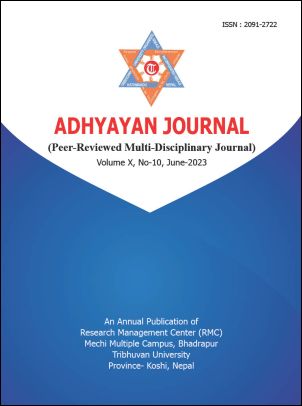Comparison of Rajvanshi and Nepali languages on the basis of sentences
DOI:
https://doi.org/10.3126/aj.v10i10.57399Keywords:
Participles, Speakers, Simple Sentence, Complex Sentence, Compound Sentence, Combined Sentence, Independent Clause, Dependent ClausseAbstract
In this research article, the sentence structure of the Rajvanshi language is compared to that of the Nepali language, and their similarities and differences are examined. This article is based on qualitative field and library research. This article's information was gathered from both primary and secondary sources. For this purpose, primary data was gathered from Rajwansi native speakers in three distinct Jhapa district locations, and secondary data was gathered from Rajwansi and Nepali language grammar and language (especially Rajwansi language) writings. Thus, the available facts have been interpreted and analyzed using the descriptive method and comparative analysis as a theoretical foundation. The conclusion of this study is that the construction process (structural structure) of all sentence categories (simple sentences, complex sentences containing infinitive verbs, compound sentences, and mixed sentences) in the Rajwanshi and Nepali languages is identical.




